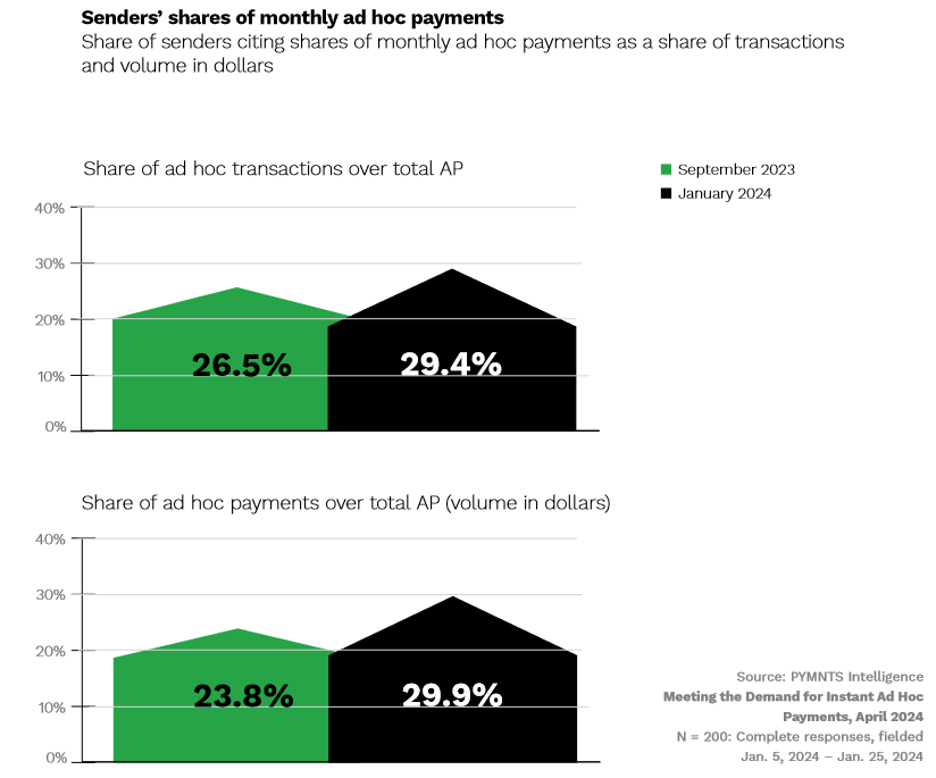Ad Hoc Payments Reach 30% of AP Dollar Volume for Enterprise SMBs

Thanks in part to the influx of gig workers and demands of key industries, enterprise small- to medium-sized business (SMB) payers are sending 28% more instant ad hoc payments than they did inSeptember.
Ad hoc payments — those payments made outside of normal invoicing and payroll processes — take center stage in PYMNTS Intelligence’s “Meeting the Demand for Instant Ad Hoc Payments,” a collaboration with Ingo Payments, that explores the intersection where ad hoc payments and instant payments meet across multiple industries.
The report is based on a survey of 200 U.S. enterprise SMBs that generate at least $50 million in annual revenues and make regular ad hoc payments.
As the report found, not only are ad hoc payments gaining traction with these enterprise SMBs, but so are instant payment rails. Increasingly, enterprise senders are seeing the value in providing instant payments options to payees, yet many still fail to appreciate how strong the demand is. Simply put, payees prefer to settle up as quickly as possible, and that’s true as well for those seeking ad hoc payments.
Because of their irregular nature, in many enterprise organizations, ad hoc payments are seen as something of a nuisance. But ad hoc payees account for a growing share of enterprise senders’ volume, and instant payment rails may represent a way to streamline their payments and possibly reduce the nuisance factor.
As the figure below illustrates, ad hoc payments represent, on average, 30% of accounts payable (AP) volume in dollars, up from 24% in the last quarter of 2023.

Gig economy companies make an above-average share of ad hoc AP payments — and data shows these firms also use instant payment methods the most.
While senders report that instant payments represent 35% of their ad hoc payment transactions, the corresponding share rises to 39% in the gig economy industry. Meanwhile, more than half of the payments distributed by senders generating revenues of more than $1 billion are instant, confirming the rise of AP automation makes instant a more viable option.
Enterprise SMBs’ use of instant methods to issue ad hoc payments is also rising, suggesting that senders increasingly recognize the benefits to AP teams and SMB and consumer receivers. Data shows that the share of ad hoc payments that payers sent instantly now stands at 35%, up from 27% last quarter. Payers at gig economy firms send ad hoc payments via instant rails the most, with 39% sent this way. Yet, winnings-related ad hoc payments increased the most of all categories, rising by 44% from last quarter.
Our data shows a strong correlation between the use of automated ad hoc payment processes and enterprise senders’ adoption of instant payment methods. As more enterprise senders automate their ad hoc payment processes, it is likely that not only will they value its ability to eliminate the nuisance factor, but satisfaction among payees may well increase.

